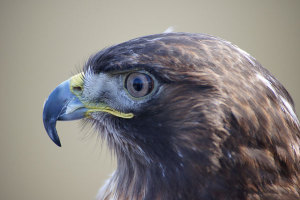 At first blush, Orange County’s habitats may seem a bit dry and scrubby, but the reality is we are part of an incredibly rich and diverse area known as the California Floristic Province. This landscape is rich in endemic species—species found nowhere else—and there is a wide array of plant and animal species here. This wide array of plant and animal species are known biological diversity. When this biological diversity is threatened with extinction due to over-development, it becomes a “hotspot of biodiversity.”
At first blush, Orange County’s habitats may seem a bit dry and scrubby, but the reality is we are part of an incredibly rich and diverse area known as the California Floristic Province. This landscape is rich in endemic species—species found nowhere else—and there is a wide array of plant and animal species here. This wide array of plant and animal species are known biological diversity. When this biological diversity is threatened with extinction due to over-development, it becomes a “hotspot of biodiversity.”
Though we may not have the allure of the coast redwoods or the large predators of Yellowstone, Orange County is actually in one of 20 “hotspots of biodiversity” found worldwide. Our area is second only to the rain forest in terms of the biodiversity. There is no other place in the continental United States that has as much biodiversity as we have right here. Many plants and animals found in our region are threatened or endangered species and even the ecosystem itself is threatened, largely due to over development.
 Our parks and open spaces include many important and inter-related plant communities. From the coast to the foothills, park visitors will see coastal sage scrub, oak woodlands, riparian areas, and grasslands. These habitats support threatened, endangered and special status species. For example most parks in Orange County have the presence of three endangered birds: the coastal cactus wren, California gnatcatcher, and least Bell’s vireo. In addition to supporting 17 species of raptors, there are also reptiles like the red diamond rattlesnake, coast horned lizard, and orange throated whiptail lizard.
Our parks and open spaces include many important and inter-related plant communities. From the coast to the foothills, park visitors will see coastal sage scrub, oak woodlands, riparian areas, and grasslands. These habitats support threatened, endangered and special status species. For example most parks in Orange County have the presence of three endangered birds: the coastal cactus wren, California gnatcatcher, and least Bell’s vireo. In addition to supporting 17 species of raptors, there are also reptiles like the red diamond rattlesnake, coast horned lizard, and orange throated whiptail lizard.
Several areas are wild enough to still maintain the ecosystem’s top predator, the mountain lion, but without this top predator we would have a very different environment. The top predator keeps all the other mid-level predators (like skunks, raccoons, and opossums) and prey species (like deer, rabbits, and squirrels) in balance.
Many of these lands were protected in perpetuity because of their natural resources. These habitat lands are sometimes the last sanctuaries available for our wildlife. It is important to respect these species and continue to protect them into the future. That’s why finding a balance of appropriate recreational use and natural resource protection is so important to the Safe Trails Coalition.